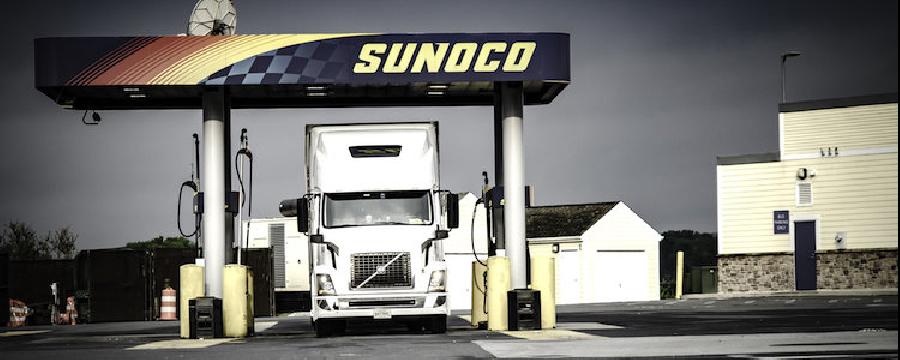

Posted on November 29, 2018 13:32:11

Since the beginning of October, the price of oil has been dropping steadily. As of Friday’s close, crude oil benchmark WTI (West Texas Intermediate) was off by nearly 25%. We’ve seen this play out before. Oil tops and then rapidly drops as traders over-correct to the downside as the world appears to have more oil supply than demand. This reversed an upward trend that started in early January 2016.
The WTI price is considered to be a benchmark of crude oil pricing with the U.S. becoming the leading producer earlier this year. Crude oil price benchmarks like the WTI and Brent prices are the price of the raw form of diesel fuel before it gets refined. Up until 2018, the price of crude and carrier fuel expense per mile moved in conjunction.
Starting in March of this year fuel expense per mile did not increase with the cost. Why is this?
Truckloadindexes.com reported on this earlier in the week citing fuel saving technology as the primary reason for the divergence in fuel price and expense. Carriers have been taking advantages of tax breaks and new laws implemented this year by purchasing new equipment and revitalizing their fleets. It has been widely reported that OEMs are in a backlog until sometime in 2019. These newer models have technologies that allow them to get better fuel economy but are also in better condition.
Many fleets were aging and there was little incentive to purchase new equipment until this year. High demand for trucking capacity in late 2017, that outpaced supply, fueled higher margins into the first quarter of 2018. For the first time in several years trucking companies enjoyed operating ratios (ORs) in the low 90s creating some excess cash flow. Combined with the tax break, there was never a better time to revitalize their fleets.
Trucking companies typically operate on razor thin profit margins, so they have a very tight schedule for replacing aging equipment. When profitability is low, they need to evaluate whether to replace units or continue to maintain the current one. If the cost benefit analysis suggests it makes more sense to maintain a unit, they may push the replacement schedule out another year or two and wait for the right time when it makes more sense.
2016 was a rough year for most carriers, considered a mini freight recession, so there was an abundance of older equipment heading into 2017 and 2018. With increasing revenue and demand carriers had even more incentive to replace a lot of the older models. Many of these models were 2014 units that got lower miles per gallon.
With WTI decreasing rapidly, many will think this should only help the carrier further reduce fuel expense into the next year. While this may be true, rapid crude price decreases can sometimes be an early warning sign for global economic slowdown. Lower demand for fuel drives the price down. With the U.S. being the world’s leading producer that means less dollars coming into the economy, which in turn could mean less freight moving through the networks.
According to a study done by FreightWaves Market Experts on the impact of fracking on the U.S. freight economy as many as 6000 truckloads are generated when a well is drilled and 300-600 truckloads each year the well produces. Some wells can operate for more than 20 years.
WTI spot price dropped 56% from mid-2015 to early 2016. It went below the break-even point--revenue and cost are equal—for production so many wells shut down during this period. The trickle-down effect was a slower economic growth period and a slower year for freight. With many macro-economic indicators showing signs of a slowing growth, fuel expense will be at the bottom of 2019 concerns for many carriers.
About Indices presented in this article
(SONAR: WTI.USA) West Texas Intermediate Price per Barrel- USA - The spot price for oil produced in the West Texas region. It is considered one of the main pricing benchmarks for crude oil in the world along with the Brent price.
(SONAR: NFEMIL.CF) Net Fuel Cost per Mile - Company Fleet - Total fuel cost divided by total miles in a month as reported by the TCA’s best practices program members. This value gives a benchmark price for asset based carriers to measure their fuel economy against.
About Chart of the Week
The FreightWaves Chart of the Week is a chart selection from SONAR that provides an interesting data point to describe the state of the freight markets. A chart is chosen from thousands of potential charts on SONAR to help participants visualize the freight market in real-time. Each week the Sultan of SONAR will post a chart, along with commentary live on the front-page. After that, the Chart of the Week will be archived on FreightWaves.com for future reference.
SONAR aggregates data from hundreds of sources, presenting the data in charts and maps and providing commentary on what freight market experts want to know about the industry- in real time.
The FreightWaves data-science and product teams are releasing new data-sets each week and enhancing the client experience.
To find out more about SONAR go here or to setup a demo click here.
contact details
MMM Express 796 Bill Rutledge Road, Winder, GA, 30680
PH: (470) 558 - 2848 FAX: (678) 298 - 7958
what we do
— Expedite
— Truckload
— Warehouse
— Truck Repair
— Less then truckload
